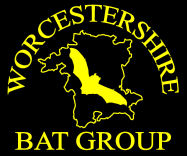As this blog emerged after the survey period, this is a bit of a retrospective review, but in these few paragraphs I hope to give a flavour of what we as a group did, what we learned and what we hope to do now.
Between 2010 and 2012, WBG took part in the Bat Conservation Trusts Bechsteins Bat Project. The principle aim was to identify new breeding sites and to see for the first time what the species range in England is. Until this point the Bat Group had not really ventured in significant surveys, and this would hopefully be a precursor to bigger and better things for us. However, this was a project that was not taken on board lightly, and the group met formally to discuss the pro and cons of participating. The team was originally lead by Stephen West and Fergus Henderson, with many other members playing supportive rolls. The unanimous consensus was to go for it! We new there were risks, mainly failure to deliver the considerable survey work required, but the benefits in terms of training, experience and of course finding out if any of the blighters were out there in Worcestershire was such that this was an opportunity the group would be stoopid to miss.
To cut a long story short, two summers of late night survey involving harp traps with acoustic lures resulted in a remarkable five breeding populations being discovered. This currently makes Worcestershire the most northerly breeding population of this bat species in Europe and probable the World - Hoorah for Worcestershire! Did I say this was the short version... Anyway one of those sites was WWTs Grafton Wood, principally renowned and managed for its rare array of butterflies. Now it has a new star, and the trust sought and received funding to undertake a programme of trapping, tagging and tracking (TTT) to see how and where the bats foraged, roosted etc. The necessary skills of bat workers experienced in TTT were provided by Johnny Birks and Eric Palmer Swift Ecology. The grunts, to coin a military term, were drafted in from members of our very own Worcestershire Bat Group, (Horrah again).
You should hear the double disk version of this tale....
The Bat Group members role was to assist in the trapping, and we were introduced to how to set up and use harp traps and mist nets. When we were fortunate to catch Bechsteins it was noted that many were underweight for the time of year <8g, and too small to be able to carry the 0.5g transmitter. However a few were large enough to tag. Now the principle role of the group kicked in, as we now had to track the bats in and out of the wood. Things did not go quite to plan, as some of the transmitters failed, but overall a great deal of information about the ecology of this particular population has come to light.
Johnny and Ferg managed to find a shed tag that is a hairs width in thickness, in the dark is woodland understorey
The task of radio tracking is one of those things that at once is surprisingly dull and monotonous, yet at the same time exciting and interesting, as all things geeky tend to be. We all wanted to do more! Sometimes the bats stayed in a very small area of woodland, other times they buggered off completely, only being found several hours later miles away from the wood, hauled up in an innocuous tree in the middle of nowhere.
Maternity roost trees were found, but the most surprising thing was the fact that the bats frequently left the wood and foraged many kilometers away, sometimes in open countryside. The interpretation of the results is ongoing, and will be published in due course.
The T shirt says Worcestershire BAT Group, not Worcestershire FAT group. That T shirt is in the wash.
Kate looking every bit a bond girl...just swap receiver for a harpoon gun!
All this data was collected by tracking and recording in detail the movements of the bats from the moment they left the roost at dusk, till they returned, often somewhere else a long way away, at dawn. Many members did two or three and some even more of these stints resulting in being awake for over 48hours at a time. This is where my Red Bull addiction paid off. Every one chipped in and gave it their all, at times it was cold and wet, other times pleasantly mild. The crap summer made sure that the wood was quagmire most of the time, and the midges kept many of us company all night, bless em.
I know that James Hitchcock of the WWT was pleased with the work and dedication of our members, without whom the project could not have succeeded. I whole heartedly concur!





No comments:
Post a Comment